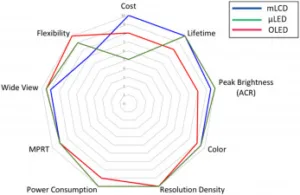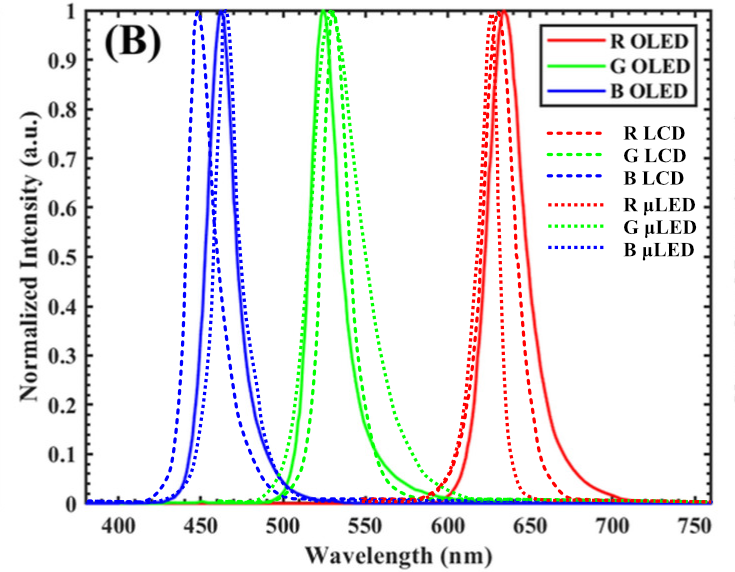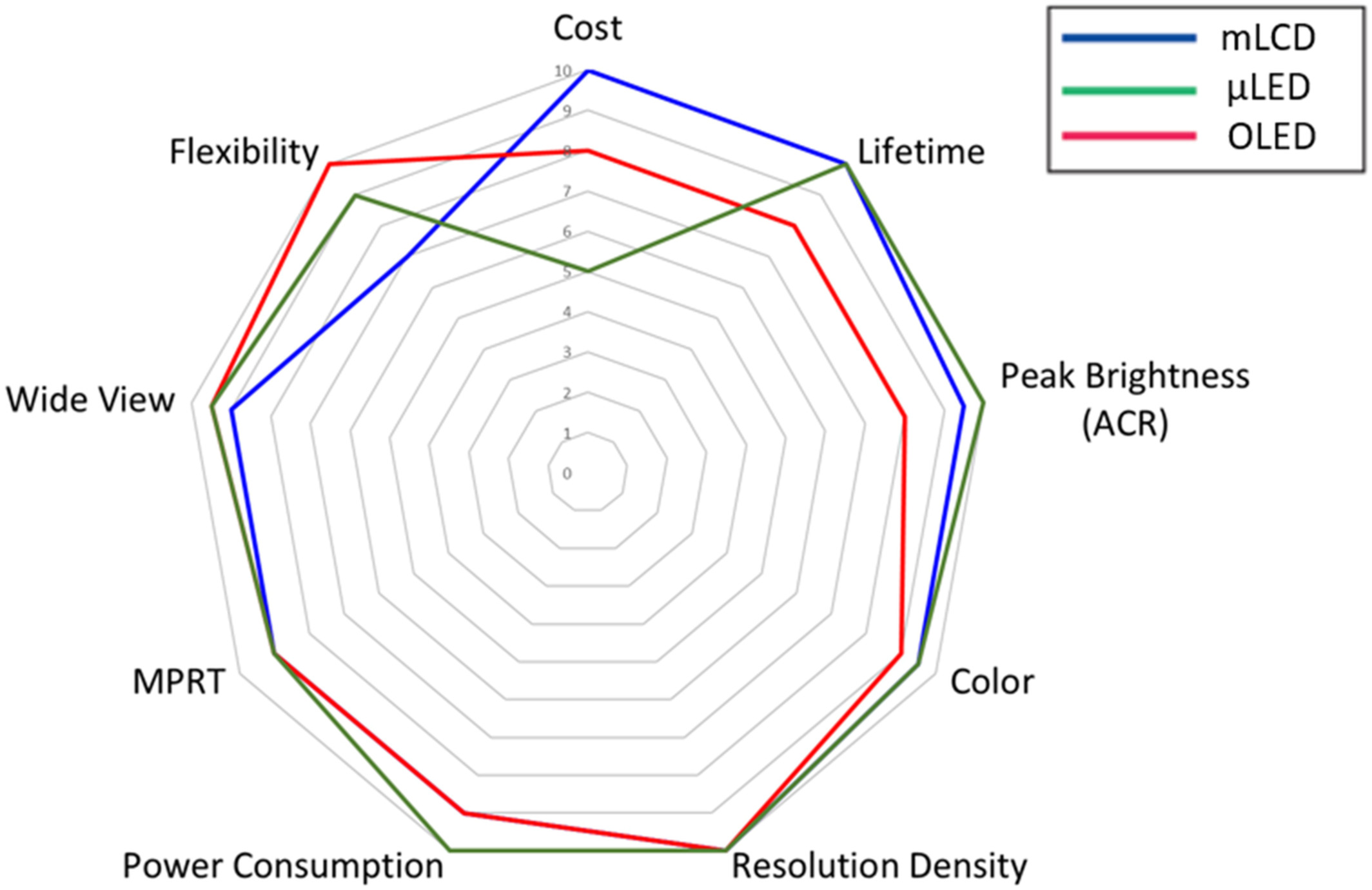We display enthusiasts always love new technologies and look forward to the ‘next big thing’ with enthusiasm. But sometimes, we assume that everything will improve, but that’s not always the case, especially early in the new technology.

I remember in the early years of LCD TVs being at CeBIT alongside someone who was raving about how good a new LCD TV was. Unusually*, it was shown side by side with ‘boring old’ CRT TV with the same picture. I pointed out that the ‘S-shaped gamma’ response of the LCD was completely destroying all the detail in the highlights and the shadows and while the image was ‘impactful’, it wasn’t beautiful or anywhere near accurate to the scene. Of course, LCD TV makers fixed that and now pretty well any LCD TV would make a CRT look poor.
*(It was unusual precisely because LCD TV makers knew how bad they would look if compared side by side!)
So we’re all assuming, I think, that microLED, widely seen as the next big display technology, is going to be better in almost every way. I was looking at an issue of the Journal of the SID (JSID) and spotted an article from a couple of months ago that looked in detail at the image quality of miniLED LCD, OLED and microLED and written by a group from the University of Central Florida and AUO. Given that the JSID is a serious, peer-reviewed journal, the information given can be considered as accurate – at least up to now. The article pointed out some areas where microLED may not be the current best option. The article looked at nine different aspects of display performance and rated all three. The chart is at the end of this article, if you can’t wait!
Let’s get three of those out of the way. MicroLED should be the best for power consumption and peak brightness (and ambient contrast ratio – see Sony’s CrystalLED if you doubt it). On the other hand, it is likely to be worst for cost as we have noted here many times because of the challenges of mass transfer, the number of LEDs and yield issues. It will be equal with LCD and better than OLED for lifetime. Again, the weakness of OLED in lifetime has been an issue for several decades. It’s equal to the others in terms of resolution density. MicroLED displays are less flexible than OLEDs, but more flexible than LCDs. The article is the place to look for these aspects, but I want to focus on the other three that impact visual image quality. They are :
- Wide viewing
- Colour
- MPRT (motion performance)
Wide Viewing
It’s no surprise that the viewing angle of OLEDs and microLEDs are better than miniLED LCDs – emissive displays are pretty well always better. However, OLEDs have had some challenges and are not perfect. Many OLEDs use microcavities in the device structure to improve colour purity. Light going through off axis effectively passes through a deeper cavity so there is some colour shift and, if I remember correctly, this was an issue for Sony with its first OLED broadcast monitors. There was a slight shift in colour off axis – perfectly acceptable in most applications, but not to some of those that had spent 10s of thousands of dollars.
In an LED, a significant part of the light comes through the sidewalls of the LED when the device is very small and both red and blue are affected, the paper reports. That’s not really a problem until you get to around 60 degrees, but at that point, there is a significant colour shift. The brightness does also drop off, but less dramatically than LCD or OLED. Over time, special processing of the sidewalls may reduce the colour shift using microlenses or specially shaped or coated sidewalls of the LED.
Colour Gamut
miniLED LCDs use QDs, perovskites or other special phosphors for colour conversion of the blue light to quite pure colours and include colour filters that further improve the narrowness of the colour of the light emitted – the Full Width Half Maximum (FWHM). LCDs can get to around 90% of Rec. 2020. New blue and red OLED materials have improved the FWHM of OLEDs and they can now reach more than 90% of Rec. 2020.
In a microLED, the FWHM is defined by the multiple quantum well layer (MQW). Red and blue usually have narrow FWH, but green is wider. A difficulty with LEDs is that the colour shifts when you drive them at different current levels. An alternative is to use something like QDs on top of blue LEDs to create the red and green, but then you have to avoid leakage of the blue.
The research group published a chart of the thee different technologies, shown here.
I was surprised that the results were as close as they were, so I tried to compare them by redrawing the LCD and microLED curves and overlaying them in a graphics program (below). It makes an interesting comparison and shows the challenge for microLED green which is notably wider in FWHM than OLEDs or miniLED LCDs. New is not always better!
MPRT (motion performance)
We were very lucky in the days of CRTs that the technology was very, very good at smoothing out motion while separating the frames just enough. Longer persistence phosphors did cause some smearing but most viewers took good performance for granted.
LCDs have two problems with fast changing motion. The first is that the crystals themselves are slow to respond to changes – after all, they are something between a liquid and a solid. The second problem is that there is no gap between the frames of the video and you suffer from the effects of what is called ‘hold addressing’. The continuous image causes smearing in the human visual system.
OLEDs and microLEDs have very fast response times, so do not suffer from the first problem, but they both have hold addressing so would not show good MPRT figures. Typically, the way to solve this is to use black frame insertion or to put it another way adjusting the duty cycle of the display. That reduces the brightness, for the same current, so you might want to boost current. That impacts lifetime for OLED and efficiency for miniLED. For microLED, the key is to keep the driving current density in the region of peak efficiency, so motion performance can be optimised, but it’s not likely to be any better than OLED.
Summary
So, in summary, the paper found that microLED would win on efficiency and brightness, but has little advantage over the other technologies in other areas. Of course, that is at the state of the art today (or probably last year when the research for the paper is likely to have been done), and, as we have seen with LCD and OLED, performance doesn’t stand still.
Comparing the three technologies, OLED looks the most under threat with issues of lifetime, ACR and Power consumption. A breakthrough in blue would change all of that – but that has been true for more than 20 years! (BR)




